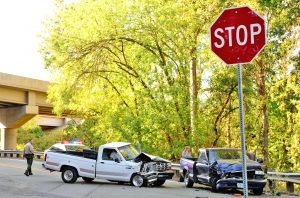Head Injury from a Car Wreck?
Did you hit your head on the steering wheel or dashboard after being rear-ended? If you did, you may be diagnosed with a closed head injury, a concussion or a brain contusion. A friend of mine, whose career is in the medical field, was good enough to provide me with the information listed below. We hope that it might assist you in treating any injuries you or your family members may have suffered in an car wreck or motorcycle accident.
A closed head injury is a trauma in which the brain is injured as a result of a blow to the head or sudden back and forth, violent motion. When this occurs, the brain is knocked around against the inside of the skull. Closed head injuries are common in traffic accidents, falls and assaults.
Closed head injuries can range from mild skull injuries to traumatic brain injury. They can result in severe brain damage or even death.
Different types of closed head injuries:
- Concussion,
- Brain contusion,
- Diffuse axonal injury and
- Hematoma
Concussions
A concussion is described as any head injury that temporarily affects normal brain function. Most concussions are mild and do not cause loss of consciousness. People suffering from a concussion can experience any number of symptoms including headache, dizziness, nausea, ringing in the ears, slurred speech, and vomiting. Persons suffering from a concussion may also have trouble concentrating or keeping their balance. While symptoms can be immediate, in other cases symptoms do not surface until hours or days after the blow to the head. Secondary symptoms can include mood swings, sensitivity to light and/or noise, and changes in sleep patterns.
Contusions
A brain contusion is when the tissues of the brain are bruised, as a result of the trauma. This can lead to a hemorrhage (bleeding) in some cases, which are then absorbed into the brain tissue. If this blood gets into the cerebrospinal fluid, it can lead to permanent neurological damage. Contusions are localized to a certain area, which is different from a concussion, which can be diffuse (spread out). Persons with a brain contusion (20-30% of severe head injuries) may feel weak and numb, lose coordination, struggle with memory or have cognitive deficits (trouble thinking straight).
Diffuse Axonal Injury
Diffuse axonal injury is one of the most debilitating traumatic brain injuries. These can be caused by high-speed collisions. Diffuse axonal injury causes permanent damage to the nerves in the brain. This can cause brain swelling and increased intracranial pressure (as with other closed head injuries), however, in this case it leads to a coma or a vegetative state in 90% of patients.
Intracranial hematoma
An intracranial hematoma occurs when the brain comes into contact with the inside of the skull, resulting in a pool or blood outside of the blood vessels of the brain or between the brain and the inside of the skull. This can compress brain tissue and requires immediate attention. This can result in unconsciousness, seizures or lethargy.



 The Bowling Green Daily News reported on a recent story. The
The Bowling Green Daily News reported on a recent story. The 
 In a
In a  As a personal injury lawyer, I preach a lot about getting your medical bills paid and recovering
As a personal injury lawyer, I preach a lot about getting your medical bills paid and recovering 

